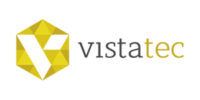How Can SaaS Companies Benefit From Localization?
We’re releasing a series of articles titled “Content With Purpose“—12 articles focused on localization meant to help you connect with people from different countries and cultures and grow globally. The last article focused on artificial intelligence and localization. This article will focus on how SaaS companies can benefit from localization.
Did you know that the global SaaS market is estimated to be worth $10 trillion by 2030? As the demand continues to rise, forward-thinking software-as-a-service (SaaS) companies are scaling into international markets. To maximize your success; you need a localization strategy that enables you to adapt products to each target market.
What Is SaaS Localization?
Before diving into why SaaS localization matters, let’s define it. Simply put, it’s adapting a product to create a native look and feel for end-users in the target market. This typically includes, but isn’t limited to:
- Translating content into the local language(s)
- Altering design elements and/or images to match cultural norms
- Adapting the user experience (UX) to meet local expectations
- Adhering to local and/or regional regulations to enter the market(s)
- Adjusting price points to ensure the new market is profitable
How much a SaaS product needs to be altered depends on the language, cultural norms, and regulations within the target market. Before launching internationally, companies should develop a SaaS localization strategy to guide them through the process.
What Is a Localization Strategy?
A localization strategy outlines a company’s overall plan for preparing to launch in a new market. While each project has its unique specifications, localizing a SaaS product consists of six basic steps:
- Conduct market research to understand local preferences and requirements.
- Build a product localization team, which includes a product manager, translators, and product developers.
- Determine which software, UX, and UI modifications are necessary.
- Localize the product for each target market.
- Conduct usability testing with local users.
- Continuously localize product updates and new releases.
As you can see, localization requires significant time and financial investment—especially for SaaS products. This is because they require updates in every available language. For SaaS, localization is rarely one-and-done, and companies may need to complete the same process numerous times during the product’s life cycle.
Why SaaS Localization Matters
Given the expense of localization, consider forgoing it for new markets. After all, 1.5 billion people speak English as either a first or second language. Speaking a second (or third) language is common among business professionals worldwide. However, there are several reasons why localization will actually make a SaaS product more successful in the long term.
Here’s a look at five ways SaaS companies can benefit from localization.
- Expand product reach with multiple languages.
Despite the proliferation of English, 76% of consumers prefer to purchase products with information in their native language, according to CSA Research. And 40% won’t buy from a website in other languages. That means you’re missing out on many potential buyers by only offering products in one language.
However, localization goes beyond translation. It also includes optimizing content for additional languages and markets. People use different search terms in other languages, impacting whether a company’s website will rank highly in search engines. By localizing content for new markets, SaaS companies will increase web traffic and, in turn, reach more buyers.
- Build brand trust.
When it comes to succeeding in a new market, brand trust is critical. Unless a company is world-renowned such as Apple or Microsoft, it takes time to build a customer base. Potential buyers must first believe that a product is trustworthy, starting by providing information in their language. The same CSA Research study found that 73% of buyers want product reviews in their native language.
Localization not only allows you to adapt the product to additional languages but adapt your website and marketing campaigns as well. This helps familiarize potential buyers with the product’s features, benefits, and the brand’s reputation. You’ll earn customers‘ trust by providing essential information in the local language, which translates into more sales.
- Increase product integration and reduce churn.
No matter how much the SaaS buyer likes a product, its success ultimately depends on other team members. Not everyone will feel comfortable using a product in another language, which is a top consideration for decision-makers.
Yet even if the original language doesn’t pose a barrier, the user experience can. A confusing layout or lack of popular SaaS features in the target market may make the product feel foreign and unusable. For example, when a Polish PR software platform launched in the U.S., users were disappointed by its initial lack of media databases. The company adapted the product to make it more like U.S.-based outlets to meet expectations.
By localizing a SaaS product for the target market, you help ensure all team members are comfortable using it. This increases company-wide product integration and reduces churn. And the more companies renew their subscriptions, the more profitable the product will be in the target market.
- Meet legal requirements.
Companies must localize product or service aspects in some regions before entering the market. For example, the Canadian province of Quebec has several language laws regarding doing business there. Requirements include:
- Registering a French business name.
- Providing employee software in French.
- Translating the company website into French.
Other regions, like the European Union, have strict data collection, protection, and privacy laws. SaaS companies must comply with General Data Protection Regulation (GDPR) requirements to avoid significant fines. This may require updating the language of the company privacy policy, cookie consent banner, and more.
Researching local legal requirements during the localization process will help you avoid fines and penalties in the target market.
- Gain a competitive edge.
Despite the benefits of localization, not all SaaS companies offer services in two or more languages. Even taking a step as simple as localizing prices into the target market’s currency can result in nearly a 40% increase in growth. And market-based price localization more than doubles growth.
By localizing a product for the target market, you’ll stand apart from other competitors and attract more customers. When potential buyers compare similar SaaS products, they’ll be far more likely to choose the one adapted for the local market.
How Vistatec Can Help
You may wonder how to get started now that you know the benefits of SaaS localization. Fortunately, it’s easy when you partner with Vistatec. We specialize in software localization and will work with you to develop a strategy to launch in any market and provide ongoing localization services.
Here’s how it works. Once we understand your needs and goals, you’ll get a dedicated localization team with a project manager and in-country linguists who are subject matter experts. Your team will collaborate closely with you and guide you at every stage—from translation methods to how to best adapt your product. We also offer end-user testing, website localization, and digital marketing services to ensure your brand shines in any language.
Over the past 25 years, we’ve helped the world’s best-known brands succeed globally, and we’re ready to help you. Consider us your partner for global success.
Want to learn more about how Vistatec can bring your vision to life? Contact us today to discuss your SaaS project.

